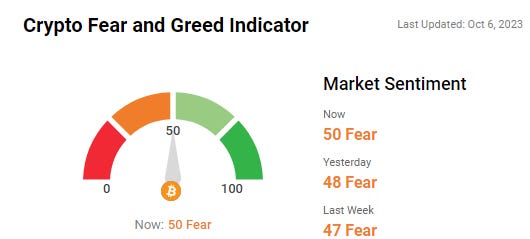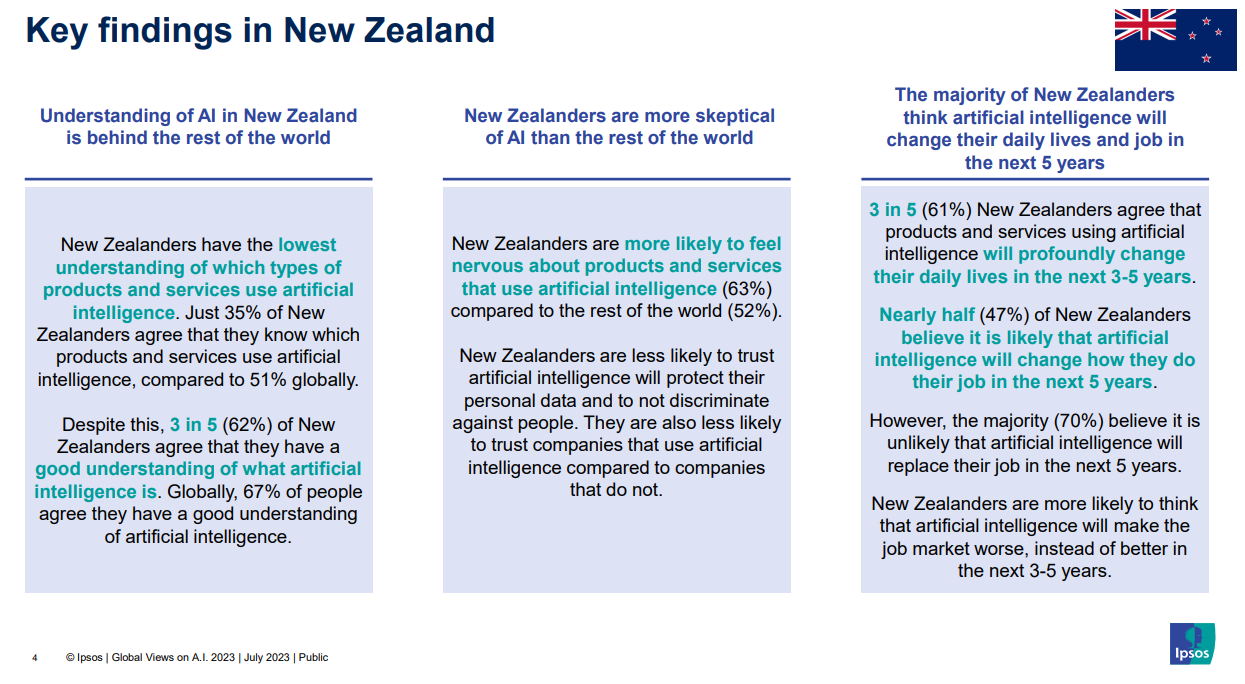📔 Weekly Journal: UK Sandbox Soon 🏖️📦⌛
[7 min read] Your guide to getting ahead on the digital frontier (& the weekend!). Today, the usual market news as well UK regulator plans to launch a second sandbox, focusing on tokenised instruments

Welcome to this week’s Weekly Journal 📔, your guide to the latest news & innovation in emerging technology, digital assets, and our exciting path to the Metaverse. This is week 47 of the 520 weeks of newsletters I have committed to, a decade of documenting our physical and digital lives converge.
New subscribers are encouraged to check out the history & purpose of this newsletter as well as the archive.
Enjoy your weekend! 😎
Ryan
Here’s what you’re getting today:
📈 Market update: A good week, and 3 reasons why BTC is struggling to rally above $28.5K.
🗞️ Interesting news: UK regulator plans to launch a second sandbox, focusing on tokenised instruments. Taiwan plans a special crypto law by Nov to regulate offshore exchanges. Surgeons using VR to save more lives.
👓 Read of the week: The Rebel Drone Maker of Myanmar
🎥 Video of the week: Interview with Mira Murati, CTO of OpenAI on the future of AI
🤖 AI: Why do New Zealand's major political parties neglect to address AI in their policies?
✅ Weekly poll: Help choose the emerging tech topic for Wednesday’s showcase.
🤑 DCA with me: Follow my regular $50 weekly investing in an emerging asset class.
Market Update
Bitcoin seems to be struggling to rally above $28.5K due to three key factors.
Concerns about an economic downturn and rising interest rates are pressuring its price.
Trading metrics show reduced demand for leveraged long positions and declining spot trading activity on traditional exchanges.
Diminishing confidence in the approval of a spot Bitcoin ETF, hampering its short-term prospects for breaking resistance.
🔥🗺️ 7-day heatmap below shows BTC a bit stronger, almost 50% dominance meaning it’s holding up about half of the entire crypto market cap:
🎭 Crypto Fear and Greed Index is based on volatility, social media sentiments, surveys, market momentum, and a few other bits and pieces. Currently in the very top end of the Fear zone.
Interesting news 🗞️
Digital Assets News 🌐💱
The UK Financial Conduct Authority (FCA) plans to launch a second digital securities sandbox in Q1 2024, focusing on tokenised instruments. Unlike the previous sandbox, this one will serve as an infrastructure sandbox to test new regulatory rules. It aims to explore the impact of distributed ledger technology on financial instruments, clearing, and settlement, fostering investor protection. The FCA awaits HM Treasury's powers to regulate digital assets, and it joins central banks worldwide in experimenting with tokenized investments and securities, with notable projects involving institutions like HSBC, JPMorgan, and UBS.
The Shanghai No.2 Intermediate People’s Court in China has officially recognised Bitcoin as a unique and irreplicable digital asset, acknowledging its scarcity and value. In a report released on Sept. 25, the court highlighted Bitcoin's distinct features, such as scarcity and currency-like attributes. Despite China's overall ban on cryptocurrencies, local courts have been increasingly recognising Bitcoin and other digital assets as legally protected properties, despite government hostility.
Taiwan plans to draft a special crypto law by November 2023 to regulate offshore exchanges. Lawmakers aim to submit the first draft for parliamentary review, considering it essential to address crypto-related business concerns and prevent regulatory arbitrage. This move follows guidelines issued by Taiwan's Financial Supervisory Commission on September 26 to enhance investor protections in the cryptocurrency industry. Additionally, major crypto exchanges in Taiwan formed an association on the same day to promote industry interests.
XR & Virtual worlds 🥽💻🌏
Meta's Quest 2 VR technology is revolutionizing healthcare by offering surgeons valuable training opportunities and pain management solutions. Surgeons can practice complex procedures with zero patient risk, leading to smoother surgeries and quicker recoveries. Medical schools are incorporating VR into their curricula, empowering future doctors. Although cost-effectiveness is a concern, VR's potential to improve health outcomes is evident. It's already aiding in pain treatment and therapy at the U.S. Department of Veterans Affairs. As VR headsets continue to improve, the healthcare sector is embracing this transformative technology, with regulatory support and growing interest from medical professionals. Exciting times!
👓Read of the Week
This week’s read is "The Rebel Drone Maker of Myanmar". Deep in the jungles of eastern Myanmar, an engineer known as "3D" quietly works on a clandestine mission. Using 3D printers, this young innovator is crafting drones and munitions to support the resistance against a brutal military regime. This article explores the intersection of technology and insurgency. In a conflict marked by stark imbalances, these weaponised drones offer a glimmer of hope to pro-democracy fighters facing aerial bombardment. It’s a great read!
🎥 Watch of the week
I enjoyed this interview with Mira Murati, CTO of OpenAI (GPT).
It’s a 25min watch so if you don’t have the time here are my 5 highlights:
Evolution of AI Models: She is confident in the potential for more capable and reliable models in the coming years. The foundation models today already have a strong understanding of the world, and efforts are ongoing to improve their output reliability.
Challenges in Output Reliability: Mira discusses the challenges of ensuring that AI models generate the desired outputs reliably. OpenAI is actively working on reinforcement learning with human feedback to make AI systems align better with human intents. Efforts are directed toward minimizing issues like hallucinations and ensuring truthfulness in AI-generated content.
Introduction of Browsing: Future improvements may include introducing browsing capabilities for AI models. This would enable these models to access fresh information, cite sources, and mitigate hallucinations. While challenging, it is seen as an achievable goal.
AI Accessibility and Experimentation: Mira highlights the importance of making AI technology accessible to a wider audience. The goal is to enable experimentation and innovation with AI tools, even among those who may not have in-depth knowledge of machine learning.
AI Generality and Interfaces: Her discussion touches upon the evolution of AI interfaces. While current efforts are focused on natural language interfaces, there is recognition that the future might see a blend of natural language and more traditional programming interfaces. The goal is to strike a balance between generality and accessibility.
AI 🎨🤖🎵✍🏼
As NZ approaches elections, voters have many things on their minds (the cost of living being top of mind for most people). AI's significance in 2023 is undeniable, with growing attention in academia, commerce, and media - including this great article from Spinoff “AI is too important to ignore this election”.
What I learned is that polling shows New Zealanders consistently report a lower understanding of and less trust in AI than the rest of the world, this is a problem. Its impact is profound, yet New Zealand's major political parties neglect to address it in their policies.
“With many forms of AI just now reaching mass adoption, the choices made by Parliament in the next few years will determine the relationship that Aotearoa and its people will have with the technology. It’s worth putting in the work to make sure it’s a good one.” - Spinoff Guest Writer Allyn Robins
Effective AI regulation is crucial to combat bias, privacy breaches, and harmful content. Regulation can boost innovation, build trust, and prioritize technologies beneficial to New Zealanders. Though AI is complex, international frameworks focusing on principles of accountability, transparency, non-discrimination, and human oversight provide a clear path for regulation. Elected leaders should engage in AI governance to ensure safe and confident adoption.
Weekly Poll ✅
Help choose what you would like to learn about on Wednesday for my weekly emerging tech showcase:
That’s all for the free version this week! If you have any organisations in mind that could benefit from learning about emerging technology, be sure to reach out. Educational workshops are one of many consulting services I offer.
DCA With Me 🤑
Dollar Cost Averaging is an investment strategy in which an investor regularly invests a fixed amount of money into a particular asset/asset class at regular intervals, regardless of its current market price. By doing so, the investor can reduce the impact of market volatility and potentially earn a better return over time. Motto = time IN the market beats trying to time the market
To experiment with this, I invest $50 NZD into a Digital Asset every week. Each week I will choose an asset that seems underpriced in the short term and has positive long-term potential. My timeframe is 3-5 years. I don’t give financial advice but if you want to follow along with me you can use my easycrypto.co.nz referral link to support this newsletter. Let’s dive into this week’s pick:
Keep reading with a 7-day free trial
Subscribe to Metaverse Field Guide to keep reading this post and get 7 days of free access to the full post archives.





